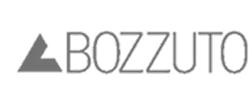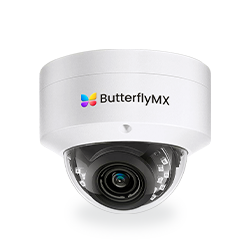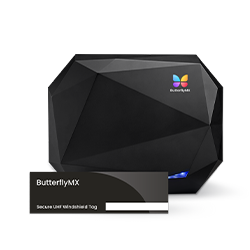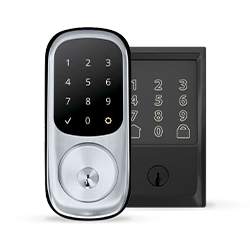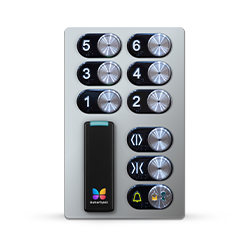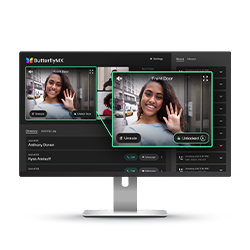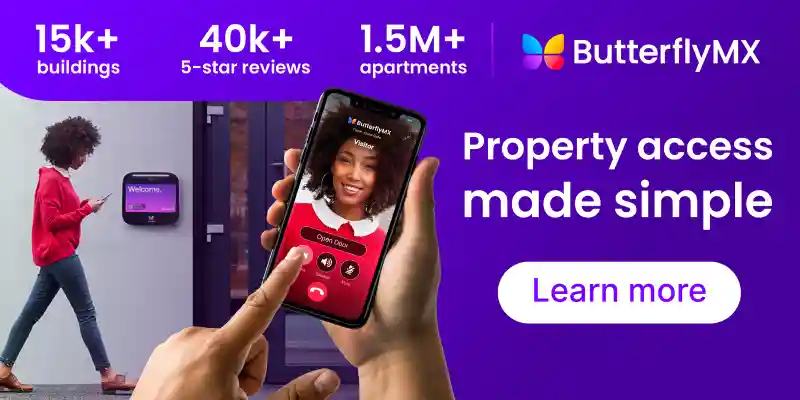Key takeaways
- Data center access control is essential for protecting physical infrastructure and preventing unauthorized entry.
- Strong physical security reduces the risk of hardware tampering, theft, and operational disruptions.
- A variety of access control technologies work together to provide layered protection and real-time monitoring.
- Access control supports compliance by automatically logging entry events and maintaining detailed records.
- Centralized platforms improve operational efficiency by giving managers full visibility and control over all access points.
- Implementing a unified access control solution enhances security, accountability, and operational continuity in data centers.
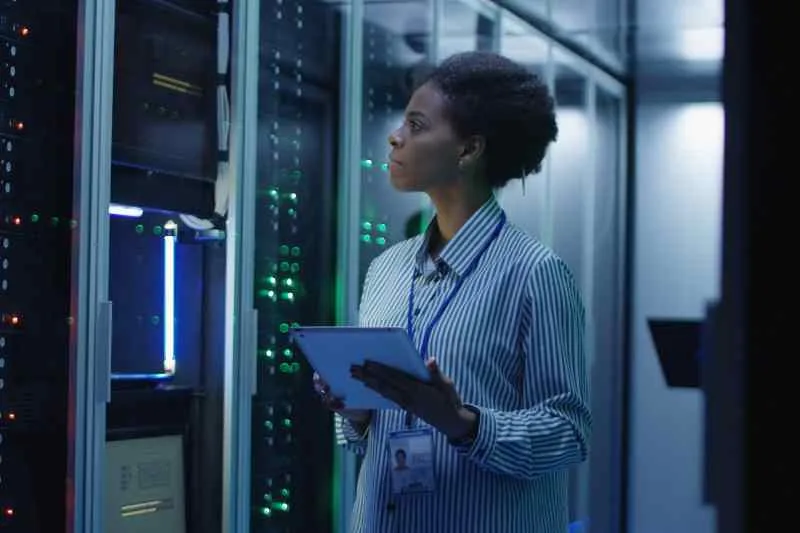
Protecting a data center goes beyond cybersecurity. While digital safeguards secure information in the cloud, access control systems protect the physical assets that store and process that data. Unauthorized access to servers, networking equipment, and utility systems can lead to costly outages, data loss, and compliance violations.
In this post, you’ll discover data center access control solutions focused specifically on physical security. You will learn what access control means in this environment, the types of technology available, and the benefits of a centralized solution. We conclude with the most robust platform for securing data center facilities and answer frequently asked questions.
In this post:
- What is data center access control?
- Why is access control and security important for data centers?
- 5 types of data center access control technology
- Use cases for data center access control
- Benefits of data center access control
- The most unified data center access control solution
- Data center access control solutions FAQs
More than 40K, 5-star reviews!
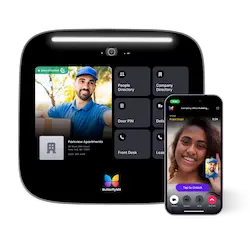
Video Intercoms
Open doors, gates & garages from anywhere.
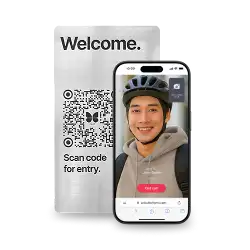
QR Code Intercom
Smartphone-based visitor access.
Access Control
Fob, key cards, PINs, and mobile apps.
Security Cameras
Visibility throughout your property.
Vehicle Access
Hands-free access for gates & garages.
Package Room
Receive, store, and manage deliveries.
Smart Locks
Connect to all major brands and models.
Elevator Controls
Unlock key-fobbed elevators for anyone.
Front Desk Station
See all your doors and cameras in one place.
What is data center access control?
Data center access control refers to the methods and technologies used to manage and restrict physical entry to critical areas of a data facility. This includes main entrances, server rooms, loading docks, storage rooms, and any area containing sensitive infrastructure. Access control solutions monitor who enters and exits, enforce permissions, and log activity for review. These safeguards ensure only authorized individuals can interact with the system’s hardware and infrastructure.
Introducing this section helps readers understand that access control is not just about locking doors. In data centers, it includes real-time visibility into movements across the facility. Access control systems authenticate identities using credentials such as mobile passes, fobs, or biometric methods, depending on the solution. They also integrate with monitoring tools to provide staff with detailed knowledge about who was where and when.
Why is access control and security important for data centers?
Physical breaches can cause data interruptions, hardware damage, and downtime much more rapidly than cyber threats. While cybersecurity protects information, physical security protects the equipment that stores and enables it. Unauthorized access can result in tampering, theft, or server disruptions.
Introducing this section gives context to the severity of physical threats. Data centers often process and store high-value or confidential data. Whether owned by commercial companies, government agencies, or cloud service providers, they must maintain strict security protocols. Physical access control helps prevent disruptions caused by human error, internal threats, or unauthorized vendor entry. Regulatory frameworks may also mandate strict access logging for accountability, making physical access control essential for both security and compliance.
Discover how ButterflyMX works:
5 types of data center access control technology
Modern data center security uses a variety of access technologies. These solutions can work independently, but are most effective when connected through a unified security platform. Each technology serves a unique purpose in safeguarding personnel, hardware, and operations.
Here are five types of data center access control technologies that enhance your security:
1. Video intercoms
A video intercom allows staff to see and verify who is requesting entrance before granting access. Ideal for vendor deliveries, third-party contractors, or visitors, a video intercom allows visual confirmation and remote unlocking. This improves control at exterior entrances or secure spaces within the building.
2. Access control systems
An access control system governs permissions across the facility. It connects doors, gates, and rooms to a centralized platform where managers determine who may enter and at what times. Access credentials may be mobile-based or include fobs or cards. This system forms the foundation of building-wide physical security.
3. Security cameras
Strategically installed security cameras provide a clear view into what is happening in and around the data center. They help identify suspicious activity, verify events, and supply historical video footage for audit trails. Cameras allow live monitoring from a central security room or a remote dashboard.
4. Vehicle access control
Vehicle access control regulates who may drive onto the property. This is essential for controlling traffic flow and limiting unauthorized vehicle access. Features may include barcode scanners, automatic license plate recognition, or remote barrier controls.
5. Front desk check-ins
A front desk station helps facilitate secure check-in of employees, contractors, and guests. Reception or security personnel can validate credentials, register temporary access, and review visitor logs. This tool offers a controlled process for managing people who must be physically present on site.
Use cases for data center access control
Data center access control serves multiple purposes beyond simply locking doors. It helps facilities maintain compliance, protect critical infrastructure, and monitor activity throughout the property, ensuring both security and operational efficiency.
Here are the top use cases for data center access control:
- Compliance. Regulated industries such as finance, healthcare, and government require detailed access control records to ensure accountability. Access control platforms automatically log entry events and can generate reports for inspections or audits.
- Physical security. Preventing break-ins, harmful interference, or unauthorized access is the primary use case. Access control technologies protect critical physical infrastructure, safeguard staff, and mitigate risk from internal threats.
- Security surveillance. Cameras paired with access event logs enable real-time and historical visibility. Surveillance systems help staff respond to incidents and verify events for investigations.
Benefits of data center access control and physical security
Access control delivers value beyond basic threat prevention. Strong physical security supports day-to-day operations and helps data centers operate more efficiently and strategically.
Here are the top benefits of implementing access control and physical security at your data center:
- Improved visibility. Access control tools offer real-time tracking of individuals across key zones of the facility. This gives security staff insights into suspicious activity and optimizes emergency response.
- Risk reduction. Limiting physical entry reduces opportunities for intrusions, internal theft, or technical sabotage. Multi-layer security frameworks make it significantly harder for unauthorized individuals to compromise hardware.
- Regulatory support. Automated log collection simplifies compliance reporting. Properly configured systems help meet industry standards and avoid penalties.
- Centralized management. A single dashboard that integrates all access points provides operational efficiency. Staff can manage permissions, monitor visitor flow, and view camera footage all within one system.
- Operational continuity. Safeguarding equipment prevents service disruptions that could impact client data or business performance.
The most unified data center access control solution
A reliable access control strategy is essential for protecting the physical infrastructure within a data center. ButterflyMX delivers this protection through a unified access control and security platform that connects every access point into one easy-to-manage system. Instead of managing standalone devices, data center operators can use ButterflyMX to centralize entry workflows, streamline on-site oversight, and monitor activity in real time.
The platform is designed to simplify physical security while improving control, enabling those responsible for facility management to respond quickly, enforce permissions, and safeguard high-value assets across the entire property.
Find out how each ButterflyMX product solves your data center security needs:
Video Intercom
The Video Intercom allows staff to visually verify anyone requesting access before granting entry. For data center operators, this is especially valuable when managing vendors, delivery personnel, or contractors. With ButterflyMX Video Intercoms, security teams can speak to visitors remotely and unlock doors directly from a mobile or web dashboard.
This not only improves the accuracy of access decisions but also speeds up entry for authorized personnel. For the data center, it means fewer opportunities for unauthorized individuals to enter, reducing the risk of tampering, theft, or accidental interference with critical equipment. It also enhances accountability, since every access request is logged with a visual record.
Access Control System
The ButterflyMX Access Control System governs permissions for all secured areas. Using ButterflyMX, administrators can assign or revoke access in real time and manage credentials through a centralized platform. This ensures that only authorized individuals can enter sensitive spaces such as server rooms, utility zones, and storage areas.
Digital credentials eliminate the risks associated with physical keys, including loss or duplication. For the data center, this means tighter control over who can reach mission-critical infrastructure, faster response to security concerns, and fewer vulnerabilities from outdated or unmanaged access methods.
Security Cameras
Security Cameras provide continuous visibility throughout the property, monitoring both interior and exterior areas. When integrated with the ButterflyMX platform, Cameras enable data center managers to view live footage alongside access logs, making it easier to verify who entered the data center and when.
This combination helps staff detect unusual activity, investigate incidents quickly, and ensure that security protocols are being followed. Additionally, Security Cameras reduce blind spots, improve incident response, and provide reliable evidence for compliance or auditing purposes, supporting both operational security and regulatory requirements.
Vehicle Access Control
Vehicle Access Control manages who can enter the property by car or service vehicle. ButterflyMX enables automated gate access and vehicle verification through the same platform used for building entry. This prevents unauthorized vehicles from reaching loading docks or critical perimeter areas, reducing the risk of theft, tampering, or unsafe deliveries.
For data center operators, controlling vehicle access ensures only approved drivers and deliveries can access sensitive areas, supporting overall site security and minimizing operational disruptions. It also provides an added layer of accountability by logging all vehicle entries and exits.
Front Desk Station
The Front Desk Station provides a secure way to check in employees, guests, or vendors. It empowers reception or security staff to validate credentials, issue temporary Visitor Passes, and keep accurate visitor records.
Streamlining the check-in process reduces bottlenecks and ensures that only authorized individuals gain access to the facility. This means improved operational efficiency, greater accountability, and reduced risk of security breaches. What’s more, detailed visitor logs support compliance and audit requirements, while the ability to manage temporary access digitally reduces staff administrative burden.
Overall, the Front Desk Station helps protect critical infrastructure while providing a professional, seamless experience for visitors and employees.
Data center access control solutions FAQs
- Can access control help with compliance?
- Can access control systems integrate with other property technologies?
Can access control help with compliance?
Yes. Access control systems create an audit trail of who entered critical areas, when they entered, and how long they stayed. These logs support compliance and reduce reporting time.
Can access control systems integrate with other property technologies?
Yes. Modern platforms are designed for interoperability, allowing them to connect with security cameras, alarm systems, and monitoring tools.

Get your free quote!
Fill in the form below, and we'll email you right back.
Want a free quote?
Fill in the form below, and we'll email you right back.
You’ll be redirected shortly...





